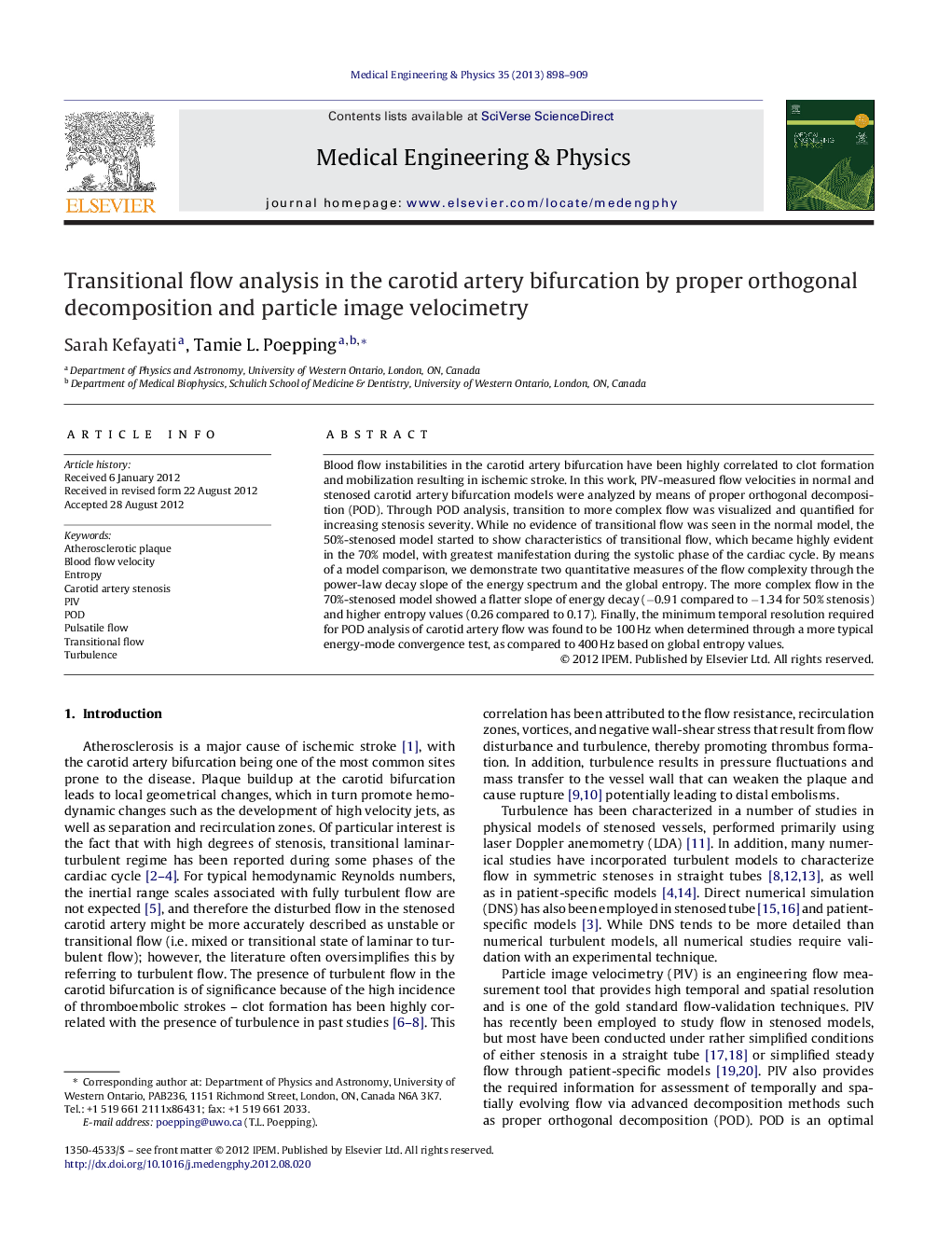| Article ID | Journal | Published Year | Pages | File Type |
|---|---|---|---|---|
| 875962 | Medical Engineering & Physics | 2013 | 12 Pages |
Blood flow instabilities in the carotid artery bifurcation have been highly correlated to clot formation and mobilization resulting in ischemic stroke. In this work, PIV-measured flow velocities in normal and stenosed carotid artery bifurcation models were analyzed by means of proper orthogonal decomposition (POD). Through POD analysis, transition to more complex flow was visualized and quantified for increasing stenosis severity. While no evidence of transitional flow was seen in the normal model, the 50%-stenosed model started to show characteristics of transitional flow, which became highly evident in the 70% model, with greatest manifestation during the systolic phase of the cardiac cycle. By means of a model comparison, we demonstrate two quantitative measures of the flow complexity through the power-law decay slope of the energy spectrum and the global entropy. The more complex flow in the 70%-stenosed model showed a flatter slope of energy decay (−0.91 compared to −1.34 for 50% stenosis) and higher entropy values (0.26 compared to 0.17). Finally, the minimum temporal resolution required for POD analysis of carotid artery flow was found to be 100 Hz when determined through a more typical energy-mode convergence test, as compared to 400 Hz based on global entropy values.
